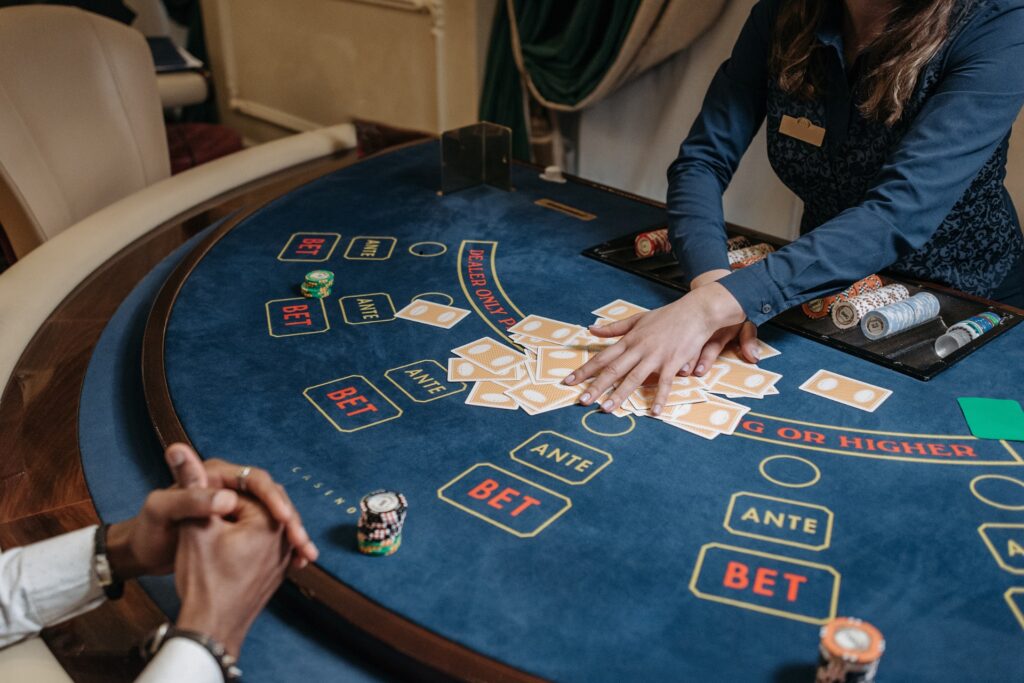Baccarat is a thrilling casino card game, brimming with suspense and excitement. Known for its straightforward rules and fast-paced gameplay, it is beloved by both seasoned gamblers and novices alike. This guide will provide step-by-step instructions on how to play Baccarat, explore its variations, and offer expert tips to enhance your gaming experience. Whether you are a beginner or an experienced player, this guide is designed to help you master the game of Baccarat.
What You Need
To play Baccarat, you need:
- A standard deck of 52 playing cards
- A Baccarat table (often found in casinos)
- Betting chips or money
Who Can Participate
Baccarat is suitable for:
- Casino enthusiasts
- Card game lovers
- Players aged 18 and above (or legal age as defined by the casino)
- Both individual players and groups (typically 7-14 players per table)
Objectives/Goals
The primary objective of Baccarat is to bet on the hand that you think will have a card total closest to 9 – the Player or the Banker. You can also place a bet on the possibility of a tie.

Step-by-Step Instructions
1. Place Your Bets
You can bet on either the Player’s hand, the Banker’s hand, or a tie. All bets must be placed before the cards are dealt.
2. Card Dealing
Two cards are dealt to both the Player and the Banker. A designated person (either a player or a casino operator) holding the shoe slides one card out and places it face up in the Player’s box on the table. The next card goes to the Banker’s box. This process is repeated until both the Player and the Banker have two cards each.
3. Determine Point Totals
- Cards 2-9 retain their face value.
- Tens and face cards (Jack, Queen, King) are worth zero points.
- Aces are worth 1 point.
If the total is more than 10, only the second digit is considered. For instance, a hand of 9 and 6 totaling 15 is considered as 5.
4. Natural Win
A natural win occurs if the first two cards dealt total 8 or 9 for either the Player or the Banker. If this happens, the game is over and bets are cashed out accordingly.
5. Additional Cards
The rules for drawing a third card are predetermined:
- For the Player:
- If the total is 6 or 7, the Player stands.
- If the total is 0-5, a third card is drawn unless faced with an immediate win by the Banker.
- For the Banker:
- The rules are more complex and depend on the value of the Player’s third card, if any. Specific conditions govern whether the Banker draws a third card or stands.
6. Calculate the Winning Hand
The hand closest to a total of 9 wins. A tie results in neither hand winning nor losing, and tie wagers are paid at higher odds.
Try To Play A Game Of Baccarat With Your New Skills!
Variations or Alternatives
There are several variations of Baccarat:
1) Punto Banco
The most popular version, where players bet on which hand will win. No decision is made by players regarding drawing a third card.
2) Baccarat Chemin de Fer
Players have the option to draw a third card and can take turns acting as the Banker.
3) Baccarat Banque
Similar to Chemin de Fer but the Banker position is more permanent and players still decide whether to draw a third card.
4) Mini-Baccarat
A smaller version of Punto Banco, typically with lower stakes and played on a smaller table.
5) Super 6 and EZ-Baccarat
These variations tweak the payouts on specific Banker wins, changing the house edge slightly.
Quiz
1. What is the primary objective in Baccarat?
2. When do you draw a third card for the Player?
3. Who has the advantage, the Player or the Banker?
4. What happens in case of a tie?
5. What is a "natural win" in Baccarat?
Interactive Scenario
Imagine you are playing Baccarat and the Player’s hand totals 2 and 3, making 5. The Banker’s hand has 5 as well. What should happen next?
Question: What is the correct action?
Answers & Explanations
Option A: The Player draws a third card, as their hand total is 5.
Option B: Explains when the Banker would draw a third card.
Option C: Retains the game rules clarity.
Option D: Explains why the game wouldn't end in a tie.
Tips and Strategies
- Understand the Odds: The Banker has a slight edge over the Player due to rules on drawing a third card. However, a commission is often deducted from Banker wins.
- Bet on the Banker: Statistically, betting on the Banker is marginally safer because of the advantageous rules.
- Manage Your Bankroll: Set limits on your bets and stick to them to avoid significant losses.
- Avoid the Tie Bet: It offers higher payouts but has a substantial house edge, making it a riskier option.
- Observe Trends: Some players track past hands to identify patterns, though each hand is independent and random.
Additional Resources
For learners looking to delve deeper into card games, check out these related guides:
For more information on Baccarat and other casino games, explore these external authoritative resources:
Conclusion
Baccarat is a captivating game that combines chance with simple strategies. By understanding the rules, knowing the variations, and using effective strategies, you can enhance your experience and increase your chances of winning. Practice and enjoy the suspense that Baccarat has to offer. For more card game guides and tips, explore the related resources and continue to master the art of casino card games.





